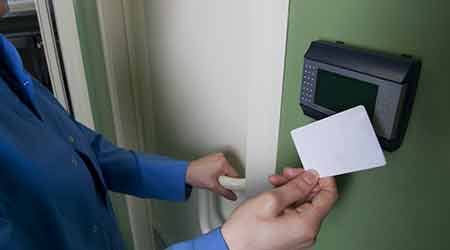Door Hardware: Striking Balance Between Safety and Security
Part 1 of 4-part article on door hardware
Despite the widespread use of electronic card access control systems, many institutional and commercial facilities still use traditional locks and keys. It is still less expensive to equip a door with a standard lock than with any type of electronic access control device. For these reasons, most facilities equip only a small percentage of their doors with electronic access devices and install traditional locks on the majority of their other doors.
So while the transition to electronic systems continues, many managers must find a balance between ensuring the performance of traditional door hardware components and incorporating emerging technology into their facilities. To achieve these goals, they must understand the essential considerations in key management, address related door hardware issues, including maintenance and specification, and develop guidelines for specifying electronic card access control systems when replacing traditional locks and keys.
Effective key management
The two most essential considerations in key management are security and ease of ingress and egress. From these considerations flow all the best practices for key management. To achieve both goals, managers should adopt policies and standards for not only keys but for locks, closers, hinges, strikes, roses, kick plates, and all associated hardware.
Effective access control policies establish integrated goals, responsibilities, and overall requirements for the management of keys and associated components to protect facilities, equipment, information and processes. The policy also should cover the constraints governing the generation, distribution, accounting, storage, use, and disposal of obsolete keys and lock cylinders.
A core component of the policy is identifying organizational roles and responsibilities, including chain of command, the role of the key manager in providing central oversight, the role of infrastructure entities, including supervisors, users, and auditors. To provide constant surveillance over the policies’ implementation, policies should contain an audit function that managers can implement to verify the use of important practices. These practices include a statement of objectives — for example, to maintain optimum access control for comprehensive safety and security of occupants, buildings, equipment, and information.
They also should include the identity of the access control manager, as well as provisions for roles and responsibilities in essential areas.
Related Topics:















